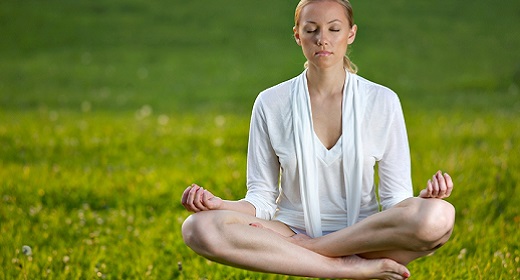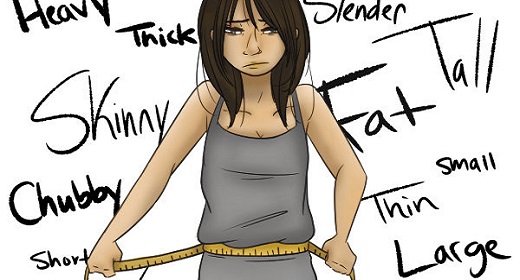by Hannah Aylward: In many ways, our life begins with our first conscious breath and ends with our last…
The breath is said to carry a person’s life force, and our lives are dependent on a constant flow of oxygen being delivered to each cell.
Pranayama is one of the eight elements of yoga, defined as “controlled intake and outflow of breath in a firmly established posture.” In yoga, prana refers to the energy that animates and permeates the world in and around us. While many modern yoga practitioners have come to associate yoga with the performance of physical postures (asana), which we deeply love, the earliest recorded texts on yoga emphasized liberation through meditation and pranayama practices.
The aim of both yoga and pranayama is to help us live more fluidly in partnership with the world around us. The breath touches every aspect of our being: physical, physiological, emotional, and spiritual.
Pranayama can make a wonderful addition to your current yoga practice. Some of the benefits of the many different pranayama exercises include reduced anxiety and depression, lower/stabilized blood pressure, increased energy levels, decreased feelings of stress, better elimination, increased focus, and a higher sense of self.
Here are some of the many types of pranayama to explore:
*Most pranayama is best practiced on an empty stomach. Choose a comfortable sitting position — either cross-legged on the floor or in a chair with your feet flat on the floor. Allow the spine to lengthen. Gently close your eyes.
Ujjayi Pranayama (Ocean Breath)
Ujjayi comes from the Sanskrit prefix ud, which means “bondage” or “binding” as well as “upward” and “expanding.” This prefix is combined with the root ji, which means “to conquer” or “acquire by conquest.” In other words, ujjayi pranayama is about obtaining freedom from bondage. Ujjayi Pranayama is known to be the most basic breathing technique and great for beginner yogis. You’ll find it cleansing and tranquilizing.
How to practice:
Allow the back of the throat to contract gently and slowly inhale with a full yogic breath. A yogic breath is slow, relaxed, and completely natural. Begin by breathing into the root of the pelvic floor filling the belly, then the ribs, and lastly the upper chest. Then exhale, releasing the breath slowly from the top of the upper chest, then from the ribs, and finally from the belly.
Maintaining the soft closure at the back of the throat, continue with a series of full yogic breaths — breathing in and out through the nostrils, allowing the flow of the breath to be completely fluid and easeful. Listen to the sound of the breath, like listening to the soft roll of ocean waves.
Nadi Shodhana (Alternate Nostril Breathing)
Nadi is a Sanskrit word meaning “channel” and shodhana means “purification.” Therefore, nadi shodhana is primarily aimed at clearing and purifying the subtle channels of the mind and body while balancing its masculine and feminine aspects. This practice is key to finding balance as an individual and is strengthening to your central nervous system.
Take this 3-Minute Tutorial Class » Nadi Shodhana Breath
How to practice:
Begin by taking a full, deep inhalation followed by a slow, gentle exhalation. Bring the right hand into Vishnu mudra by folding the tips of the index and middle fingers inward until they touch the palm at the base of the right thumb. Align the length of the ring and pinky fingers on the right hand.
First, use the right thumb to close the right nostril. Exhale gently, but fully, through the left nostril. Keeping the right nostril closed, inhale deep into the belly through the left nostril, allowing the breath to travel upward along the left side of the spine to the head. Pause briefly.
Next, use the ring and pinky fingers of the right hand to gently close the left nostril and simultaneously release the right nostril. Exhale through the right nostril, releasing the breath down the right side of the body down to the pelvic floor. Pause gently.
Keeping the left nostril closed, inhale once again through the right nostril, drawing the breath back up, pausing briefly at the crown of the head.
Then again, use the right thumb to close the right nostril as you release the left nostril. Exhale through the left nostril, surrendering the breath back down to the pelvic floor. Pause gently at the bottom of the exhalation.
This completes one round of nadi shodhana. Repeat this alternating pattern for several more rounds.
Sheetali/Sitkari Pranayama (Cooling Breath)
Sheetali comes from the Sanskrit root “sheet” meaning “cold” or “frigid” while sheetal translates roughly as “that which is calm, passionless, and soothing”. Sheetali pranayama calms and soothes the mind and body by activating a cooling mechanism on the inhalation, delivering a gentle cooling energy to the body.
How to practice:
Inhale according to your ability to roll your tongue.
If you can roll your tongue, inhale through a curled tongue and exhaling through the nose. During each exhalation, lightly touch the tip of the tongue to the roof of the mouth, inviting the cool tip of the tongue to send coolness toward the upper palate. Continue this cycle for one to five minutes until you feel refreshed.
If you are unable to curl your tongue, practice a variation known as Sitkari pranayama. Inhale through the teeth, with the lips parted and the tongue floating just behind the teeth.
Dirga Pranayama (Three Part Breathing)
Dirga Pranayama is one of the most calming and grounding breathing exercises you can do. It works to help focus your attention on the present moment and get in tune with the sensations of your physical body.
How to practice:
Begin to inhale and exhale deeply through the nose. On each inhale, fill the belly up with your breath. Expand the belly with air like a balloon. On each exhale, expel all the air out from the belly through your nose. Draw your navel back towards your spine to make sure that the belly is empty of air.
Repeat this deep belly breathing for about five breaths. This is part one.
On the next inhale, fill the belly up with air. Then when the belly is full, draw in a little more breath and let that air expand into the rib cage causing the ribs to widen apart. On the exhale, let the air go first from the rib cage, letting the ribs slide closer together, and then from the belly, drawing the navel back towards the spine.
Repeat this deep breathing into the belly and rib cage for about five breaths. This is part two.
On the next inhale, fill the belly and rib cage up with air. Then sip in just a little more air and let it fill the upper chest, all the way up to the collarbone to expand and rise. On the exhale, let the breath go first from the upper chest, allowing the heart center to sink back down, then from the rib cage, letting the ribs slide closer together. Finally, let the air go from the belly, drawing the navel back towards the spine.
Simha Pranayama (Lion’s Breath)
Simhasana helps to strengthen the muscles in the throat in preparation for more advanced pranayama practices.
How to practice:
Inhale through the nose. Then open the mouth wide and extend the tongue out toward the chin as far as you comfortably can. On the exhalation release a breathy “aaaahhhhhh” sound. Your mouth should be as open as possible.
Close the mouth, inhale through the nose, open the mouth wide, extend the tongue, and once again, release a breathy “roar” on the exhalation. Repeat this cycle at up to 20 times.
*These instructions serve as general guidelines. Pranayama practices are best learned under the guidance of a qualified instructor.
As we learn to harness the breath, we begin to experience a new level of mind/body awareness which improves our capacity to live in the present moment. Living in the present allows us to pay attention to our thoughts, feelings, and surroundings without attaching judgment. Removing judgment from our thoughts strengthens our ability to control emotional reactions and invites peace and contentment into our daily lives.
*We recommend that you do not rely solely on the information presented and that you always read labels, warnings, and directions before using or consuming a product. You should consult your health care professional before making any changes to your regular health care routine.


















































